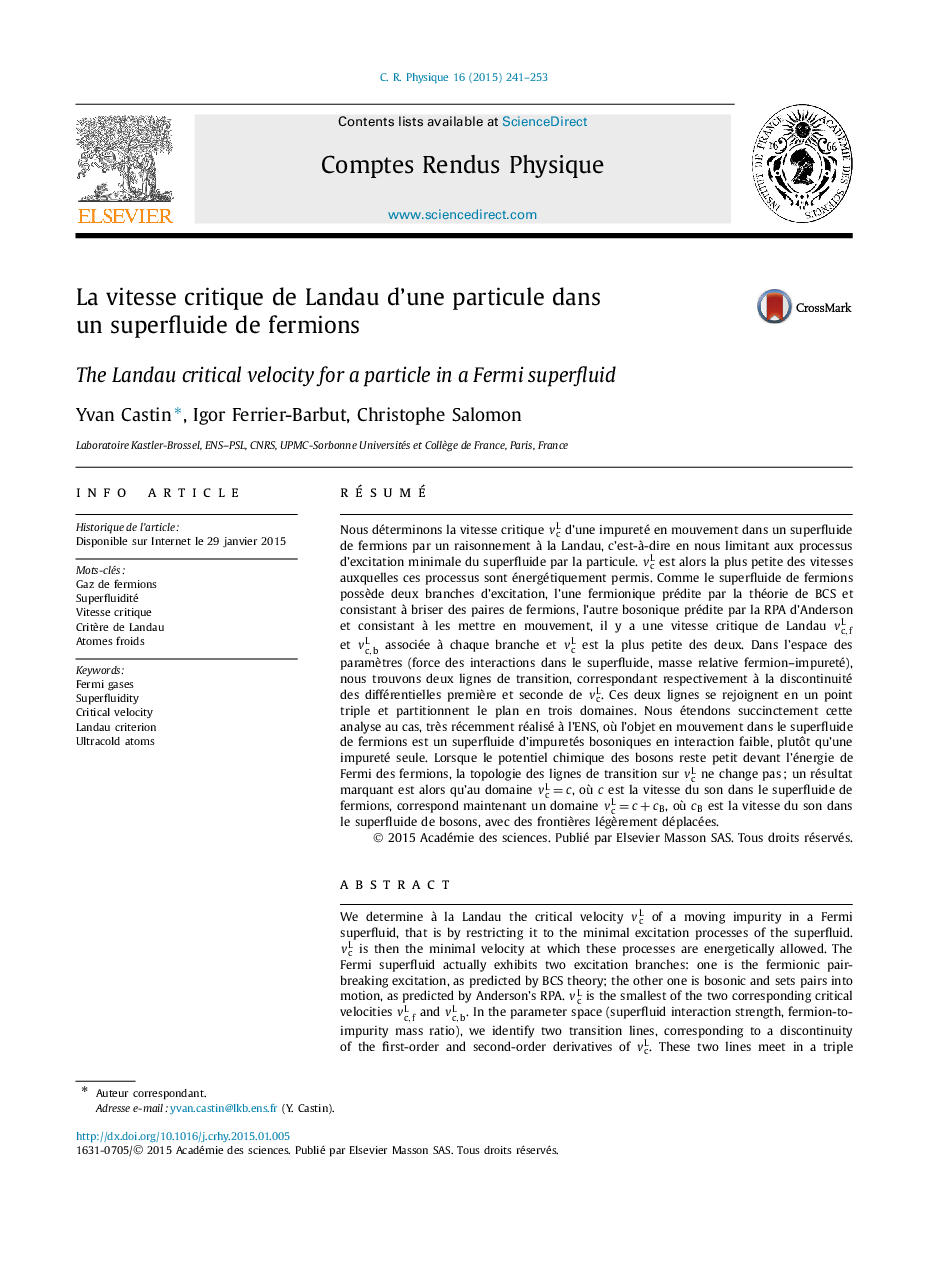| Article ID | Journal | Published Year | Pages | File Type |
|---|---|---|---|---|
| 1857716 | Comptes Rendus Physique | 2015 | 13 Pages |
Abstract
We determine à la Landau the critical velocity vcL of a moving impurity in a Fermi superfluid, that is by restricting it to the minimal excitation processes of the superfluid. vcL is then the minimal velocity at which these processes are energetically allowed. The Fermi superfluid actually exhibits two excitation branches: one is the fermionic pair-breaking excitation, as predicted by BCS theory; the other one is bosonic and sets pairs into motion, as predicted by Anderson's RPA. vcL is the smallest of the two corresponding critical velocities vc,fL and vc,bL. In the parameter space (superfluid interaction strength, fermion-to-impurity mass ratio), we identify two transition lines, corresponding to a discontinuity of the first-order and second-order derivatives of vcL. These two lines meet in a triple point and split the plane in three domains. We briefly extend this analysis to the very recently realized case at ENS, where the moving object in the Fermi superfluid is a weakly interacting Bose superfluid of impurities, rather than a single impurity. For a Bose chemical potential much smaller than the Fermi energy, the topology of the transition lines is unaffected; a key result is that the domain vcL=c, where c is the sound velocity in the Fermi superfluid, is turned into a domain vcL=c+cB, where cB is the sound velocity in the Bose superfluid, with slightly shifted boundaries.
Keywords
Related Topics
Physical Sciences and Engineering
Physics and Astronomy
Physics and Astronomy (General)
Authors
Yvan Castin, Igor Ferrier-Barbut, Christophe Salomon,
